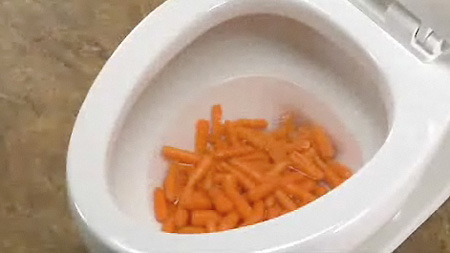Is it Suitable to Dispose of Food Down the Toilet?
Is it Suitable to Dispose of Food Down the Toilet?
Blog Article
The writer is making several great points about Flushing Food Down the Toilet? in general in this article below.

Intro
Lots of people are usually faced with the dilemma of what to do with food waste, particularly when it concerns leftovers or scraps. One usual question that occurs is whether it's okay to purge food down the bathroom. In this article, we'll look into the reasons individuals could take into consideration flushing food, the effects of doing so, and different approaches for proper disposal.
Reasons why people might consider purging food
Lack of understanding
Some people might not be aware of the potential harm triggered by purging food down the bathroom. They may erroneously believe that it's a safe technique.
Comfort
Purging food down the commode might feel like a quick and very easy service to dealing with undesirable scraps, particularly when there's no neighboring trash can readily available.
Negligence
In many cases, individuals may merely choose to flush food out of large idleness, without thinking about the consequences of their activities.
Effects of flushing food down the toilet
Ecological impact
Food waste that winds up in rivers can contribute to pollution and harm aquatic ecological communities. Additionally, the water utilized to flush food can strain water resources.
Plumbing concerns
Purging food can bring about clogged pipelines and drains pipes, causing pricey pipes repair work and aggravations.
Sorts of food that should not be purged
Coarse foods
Foods with fibrous structures such as celery or corn husks can obtain tangled in pipes and trigger clogs.
Starchy foods
Starchy foods like pasta and rice can soak up water and swell, leading to clogs in pipelines.
Oils and fats
Greasy foods like bacon or food preparation oils must never ever be purged down the bathroom as they can strengthen and create clogs.
Proper disposal methods for food waste
Making use of a garbage disposal
For homes equipped with garbage disposals, food scraps can be ground up and flushed through the plumbing system. Nonetheless, not all foods appropriate for disposal in this way.
Recycling
Particular food product packaging products can be recycled, decreasing waste and minimizing environmental effect.
Composting
Composting is a green means to take care of food waste. Organic products can be composted and used to improve dirt for gardening.
The importance of appropriate waste administration
Lowering ecological harm
Correct waste monitoring techniques, such as composting and recycling, assistance minimize contamination and preserve natural deposits for future generations.
Protecting plumbing systems
By preventing the practice of flushing food down the toilet, home owners can prevent costly plumbing fixings and preserve the integrity of their plumbing systems.
Final thought
To conclude, while it may be alluring to flush food down the toilet for convenience, it is very important to comprehend the possible effects of this action. By taking on appropriate waste administration practices and throwing away food waste sensibly, people can add to healthier pipes systems and a cleaner environment for all.
FLUSH FOOD DOWN THE TOILET?
FLUSHING FOOD CAN CAUSE BLOCKED DRAINS IN YOUR HOME
All of the plumbing fixtures in your home are connected to the same sewer pipe outside of your home. This outdoor sewer pipe is responsible for transporting all the wastewater from your home to the Council sewer mains. Even small pieces of food that go down the kitchen sink can cause problems for your sewer. It should therefore be obvious that flushing larger bits of food, such as meat, risks a clog in either the toilet itself or the sewer pipes. Flushing greasy food is even more problematic because oil coagulates when it cools, coating the interior lining of your pipes.
THE TOILET IS NOT A BIN
Food isn’t the only thing that people shouldn’t be flushing down the toilet. People use the toilet to dispose of all kinds of things such as tampons, makeup wipes, dental floss, kitty litter and even underwear. Water goes to great lengths to educate residents about the high costs and stress placed on wastewater treatment systems simply from people flushing the wrong stuff down the toilet. It costs taxpayers millions of dollars each year, and homeowners thousands in blocked drain repairs.
FLUSHING FOOD IS A WASTE OF WATER
Flushing food is a waste of our most precious resource - water. In June this year Level 1 water restrictions were introduced to protect water supply from drought conditions. Much of New South Wales continues to be affected by prolonged drought with recent figures revealing up to 97 per cent of the state remains in drought. Depending on whether you have a single or dual flush toilet, every single flush uses between five and 11 litres of water. In the current climate this is a huge amount of water to be wasting on flushing food that should be placed in the bin (or better yet, the compost).
https://www.jabplumbingsolutions.com.au/blog/can-you-flush-food-down-the-toilet

Do you like more info about Think Twice Before Flushing Food Down Your Toilet? Try leaving a short review directly below. We would be delighted to listen to your suggestions about this review. We hope that you visit us again later on. Sharing is good. Helping people is fun. Thanks a bunch for your time. Come back soon.
Course Detail Report this page